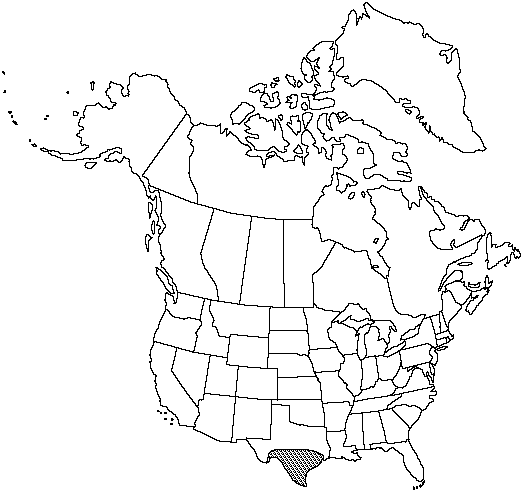Difference between revisions of "Pellaea ovata"
Contr. Gray Herb. 114: 34. 1936 Pteris ovata Desvaux, Mém. Soc. Lin. 1827.
FNA>Volume Importer |
imported>Volume Importer |
||
| (2 intermediate revisions by 2 users not shown) | |||
| Line 47: | Line 47: | ||
|publication year=1827 | |publication year=1827 | ||
|special status= | |special status= | ||
| − | |source xml=https:// | + | |source xml=https://bitbucket.org/aafc-mbb/fna-data-curation/src/2e0870ddd59836b60bcf96646a41e87ea5a5943a/coarse_grained_fna_xml/V2/V2_483.xml |
|genus=Pellaea | |genus=Pellaea | ||
|species=Pellaea ovata | |species=Pellaea ovata | ||
Latest revision as of 20:23, 5 November 2020
Stems creeping, horizontal, slender, 2–5 mm diam.; scales mostly bicolored, lanceolate, largest scales 0.3–0.8 mm wide, centers black, thick, margins brown, thin, erose-dentate. Leaves monomorphic, clustered or scattered along stem, 15–100 cm; croziers pubescent, bearing a few scales. Petiole straw-colored, tan, or gray, not lustrous, rounded or slightly flattened adaxially, without prominent articulation lines. Blade elongate-deltate, usually 3-pinnate proximally, 5–25 cm wide; rachis tan throughout, strongly flexuous, rounded or flattened adaxially, usually glabrous. Pinnae retrorse, projecting downward toward base of leaf, not decurrent on rachis, with 5–40 ultimate segments; costae strongly flexuous, 25–120 mm, longer than ultimate segments. Ultimate segments lanceolate-deltate, 5–20 mm, leathery, glabrous or sparsely pubescent; margins recurved on fertile segments, covering less than 1/2 abaxial surface, borders whitish, entire; apex obtuse to truncate. Veins of ultimate segments obscure. Sporangia short-stalked, containing 64 spores, not intermixed with farina-producing glands. 2n = 58.
Phenology: Sporulating summer–fall.
Habitat: Rocky slopes and ledges, leaves often supported by associated vegetation, on a variety of substrates including granite and limestone
Elevation: 300–1700 m
Distribution

Tex., Mexico, West Indies in Hispaniola, Central America, South America.
Discussion
Populations of Pellaea ovata in the flora are composed of sexual diploids; an apogamous triploid cytotype predominates south of the United States. I have not seen herbarium specimens to substantiate reports of P. ovata from New Mexico (D. B. Lellinger 1985).
Selected References
None.